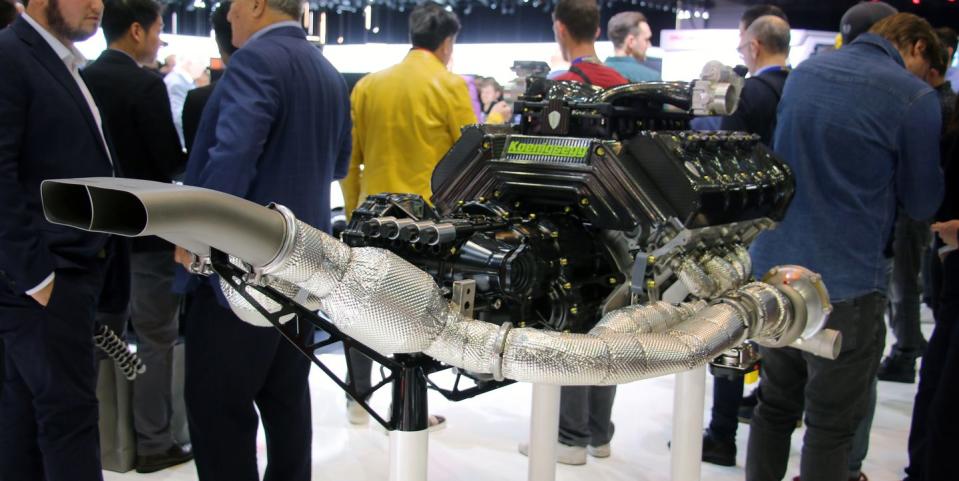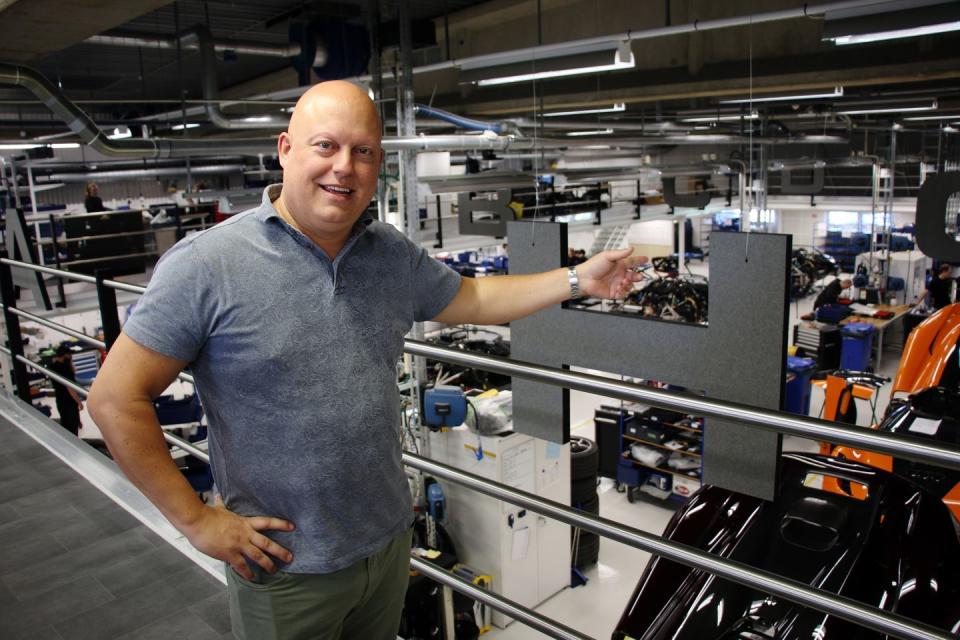Koenigsegg Explains How His High-Power, High-Tech Engine Stays Environmentally Friendly

The Koenigsegg Jesko is the latest and most outrageous vehicle to come from the Swedish supercar maker. It has a flat-plane-crank 5.1-liter V-8 that revs to 8500 rpm, twin turbochargers, and it makes 1600 horsepower on E85. It's connected to a revolutionary nine-speed transmission that will immediately downshift to the lowest possible gear when you want all-out acceleration with no waiting.
But that's not the most exciting drivetrain technology that Koenigsegg is working on.
By now, you've probably heard of Freevalve, Koenigsegg's design for a piston engine with no camshafts and infinitely variable valve timing. So far, we've seen it implemented on the Tiny Friendly Giant, a 2.0-liter twin-turbo three-cylinder engine that makes an almost unbelievable 600 horsepower.

This engine is set to debut in the Koenigsegg Gemera, a four-seat hybrid performance car. The Gemera, it turns out, was initially planned to use a naturally aspirated V-8 with Freevalve, so during our wide-ranging interview, I asked founder Christian von Koenigsegg what led to the change in Gemera.
"The three-cylinder Freevalve concept was something I had in the back of my mind, dreaming about for like 10 years—to have this super compact, renewable-fuel-capable little monster of an engine that can replace much bigger engines," von Koenigsegg said. (By "renewable," he's referring to the engine's ability to run on ethanol derived from plant matter.)
Von Koenigsegg explained that, in the beginning of Gemera development, he wanted to use a naturally aspirated V-8 with hybrid electrification. "Removing the turbos, increasing compression and adjusting the intake has very little effect on emissions, because you don't have the turbos cooling down the exhaust gases before the catalytic converters," von Koenigsegg said. "In my mind, the N/A V-8 is absolutely possible, and if you then put Freevalve on top, it's a walk in the park. But even with camshafts, it's definitely possible."

He hasn't built a Freevalve-equipped V-8 as of yet. "We have fine-tuned and tweaked the V-8 over so many years," he said. "Every time we thought we should remove the camshafts, we noticed we already have the power we want, we have the emissions we want, and it's working. It's trusted, a known entity. So, we left it for that reason, even though we know we could reduce fuel consumption, emissions, and have more torque and power if we do change. It's always lurking around the corner."
Besides, the V-8 presented challenges in the four-seat Gemera. "We had that package, but we realized that we were kind of infringing on the interior space a little bit more than I wanted," he said. "We were fighting to make it work, only to land back at the three-cylinder idea. We started packaging it, and everything started to fall into place. Then we really started pushing for the development of that engine, and of course we were doing it mainly for the Gemera, but we now also see other opportunities for this engine."
What kind of opportunities? Von Koenigsegg envisions the Tiny Friendly Giant in "configurations for cars, boats, airplanes. You can have a super compact renewable thing... where it's tough to do electrification, like in aviation for example. Longer range is very hard to do, at least paired with speed, so if you could use renewable fuels in a compact package, it's interesting for these applications."

For now, Koenigsegg will carry on with its two flex-fuel internal combustion engines—the V-8 and the three-cylinder TFG—paired with varying levels of hybrid electrification. Christian von Koenigsegg thinks he can stay with this combination while still meeting the increasingly stringent environmental requirements of the near future.
"I think it would be a mistake for humankind to forbid CO2-neutral, almost zero-emitting engines that run on renewable fuels for certain applications," he said. "Especially low-volume [production vehicles], because they have absolutely no impact on the environment, or greenhouse emissions for that matter, if they are CO2 neutral. For sure, these hyper- and megacars with combustion engines should run on renewable fuels, and then they will have zero impact on the environment. It would be exciting for them to be allowed to exist, and I hope the world is sane enough to see that. We are trying to make internal combustion much better for the environment, and I think that's better than just ignoring it."
You Might Also Like
